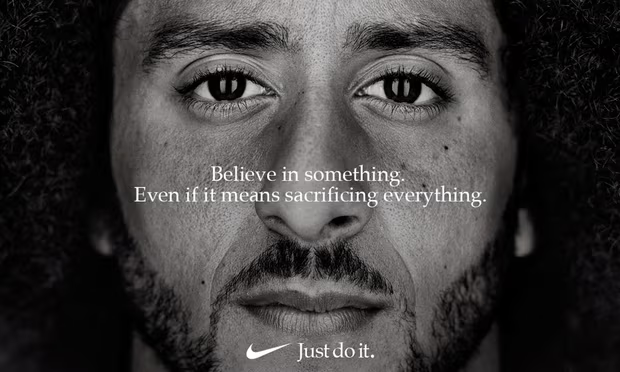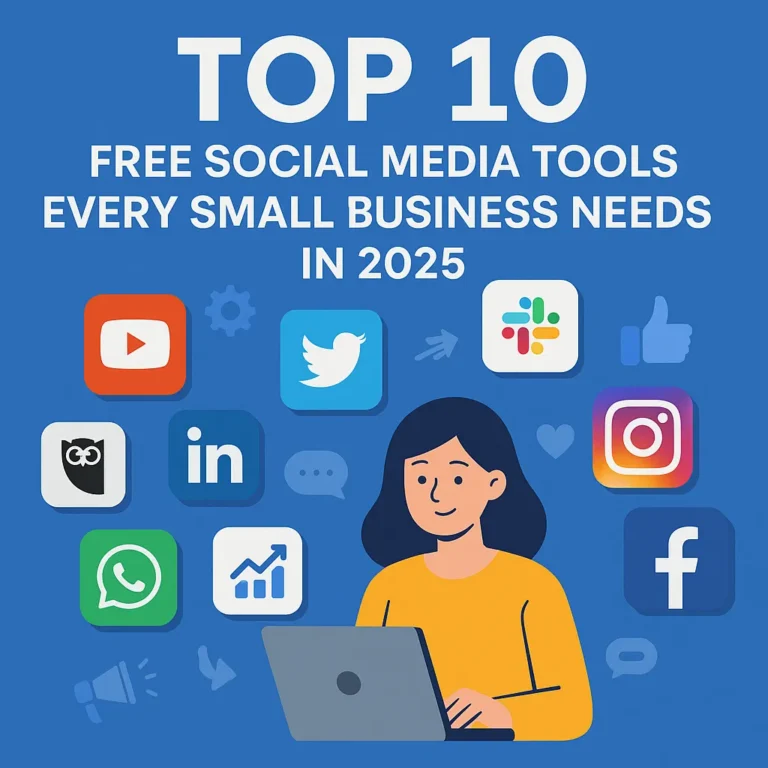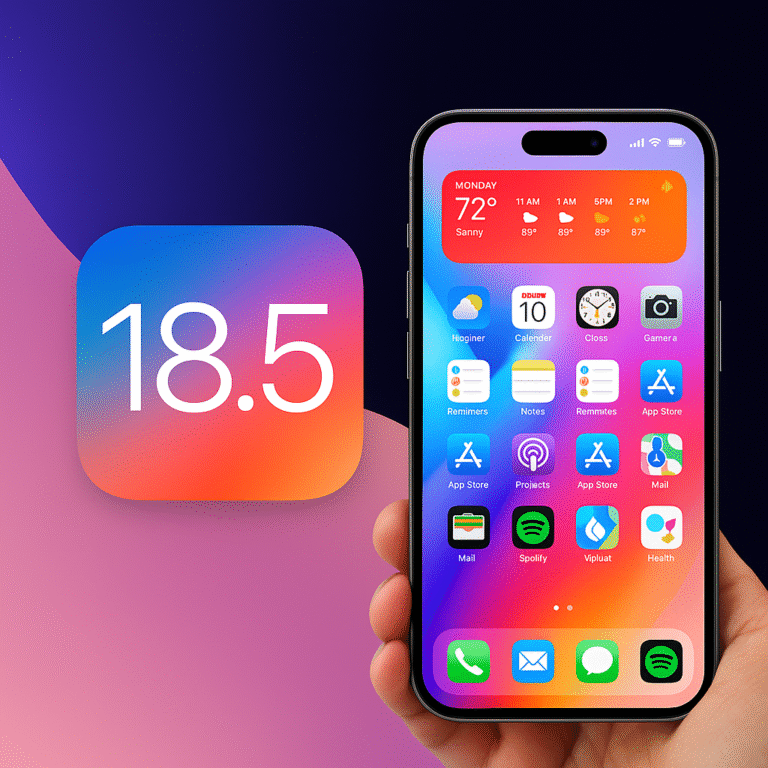10 Best Social Media Marketing Examples That Actually Worked
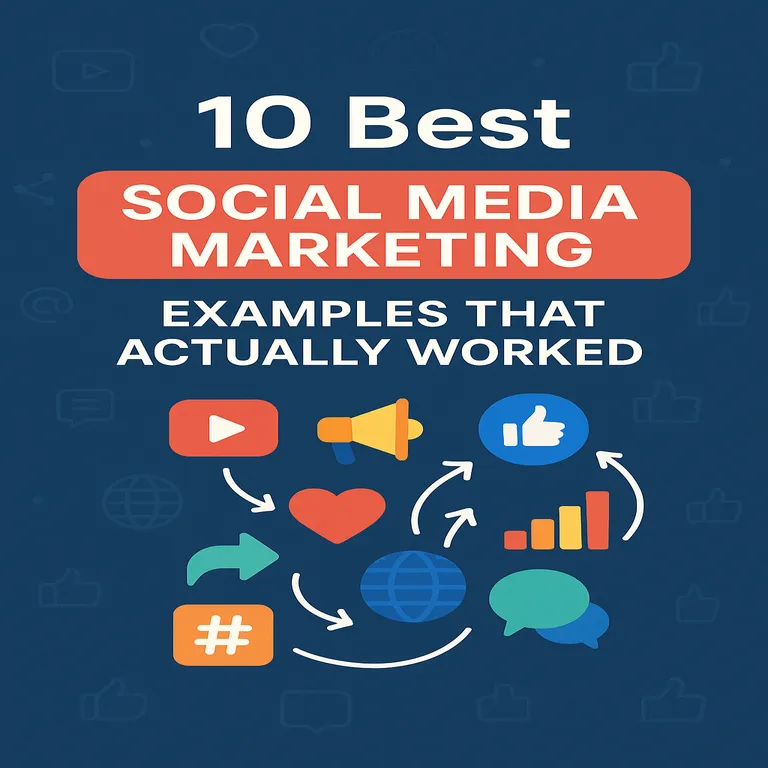
10 Best Social Media Marketing Examples That Actually Worked
Social media marketing has evolved from simple brand posts to sophisticated campaigns that drive real business results. With billions of users across platforms, brands that master social media marketing can achieve incredible reach, engagement, and conversions that traditional advertising simply can’t match.
The difference between a good social media campaign and a great one often comes down to understanding your audience, choosing the right message, and executing with creativity and authenticity. The best social media marketing examples share common traits: they tell compelling stories, encourage participation, and create genuine connections with their target audience.
In this post, we’ll explore 10 outstanding social media marketing campaigns that not only captured attention but delivered measurable results for their brands. These examples will inspire your own campaigns and show you what’s possible when social media marketing is done right.
Table of Contents
ToggleWhat Makes Social Media Marketing Campaigns Successful?
Before diving into our examples, it’s important to understand what separates successful campaigns from the rest. The most effective social media marketing campaigns share several key characteristics:
Authentic storytelling connects with audiences on an emotional level rather than just pushing products. Clear objectives ensure every post serves a specific purpose, whether that’s brand awareness, lead generation, or community building. Platform optimization means tailoring content to each social media platform’s unique features and audience expectations.
User participation transforms passive viewers into active brand ambassadors, while consistent messaging reinforces brand identity across all touchpoints. Finally, measurable results prove the campaign’s effectiveness through metrics like engagement rates, reach, conversions, and return on investment.
10 Outstanding Social Media Marketing Examples
1. Nike's "Dream Crazy" Campaign
- Campaign Overview: Launched in 2018 as part of Nike’s 30th anniversary “Just Do It” campaign, “Dream Crazy” featured former NFL quarterback Colin Kaepernick with the powerful tagline: “Believe in something. Even if it means sacrificing everything.” The campaign included a striking black and white close-up of Kaepernick’s face, a two-minute commercial narrated by him, billboard ads in major U.S. cities, and an extensive social media push featuring other athletes like Serena Williams and LeBron James.
- The Results: The campaign delivered extraordinary results despite initial controversy. Nike’s online sales surged by 31% compared to the same period in the previous year, and by the end of 2018, Nike’s stock had risen nearly 18% since the campaign’s release. It generated millions of social media mentions and won the prestigious Grand Prix in Entertainment for Sport at the 2019 Cannes Lions Festival.
- The Strategy: Nike made a calculated risk by partnering with a controversial figure who had kneeled during the national anthem to protest racial injustice. Millennials and Gen Z—Nike’s key target segments—responded positively, reinforcing Nike’s understanding of their core audience’s values around social justice and authenticity.
- Why it worked: Nike tapped into powerful emotional storytelling and bold brand activism. The campaign resonated deeply with socially conscious consumers, increased brand loyalty, and elevated the brand as a cultural leader.
- Key Takeaway: Don’t shy away from taking a stand on important issues. When aligned with your audience’s values, brand activism can drive trust, engagement, and real business growth—even if it sparks some controversy.
2. Apple's "Shot on iPhone" Campaign
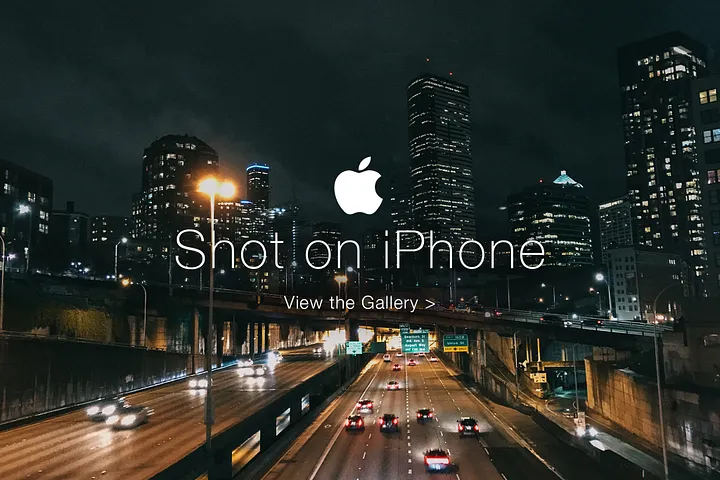
- Campaign Overview: Launched in 2015 and continuing through 2024, Apple’s “Shot on iPhone” campaign began with the iPhone 6s launch to showcase its 12-megapixel camera. The campaign includes social media contests using
#shotoniphonehashtags, influencer partnerships with photographers, billboard advertisements featuring user photos, TV commercials, and in-store displays of winning photos. - The Results: The campaign achieved extraordinary success with over 70 million interactions on Instagram alone and more than 100,000 photo submissions. Recent iterations generated over 100 million views, contributing to record iPhone sales. The campaign won multiple awards including a Cannes Lion Grand Prix for Outdoor, D&AD Pencil for Digital Advertising, and CLIO Award for Integrated Campaign.
- The Strategy: Apple targeted photography-passionate Millennials and Gen Z users by creating a dedicated contest microsite, partnering with Instagram influencers and photographers, and featuring minimal-copy print ads that let images speak for themselves. The campaign transformed customers into brand ambassadors while demonstrating camera capabilities through real-world usage.
- Why it worked: The campaign leveraged authentic user creativity while demonstrating iPhone camera quality through real-world examples. Apple successfully created a continuous cycle of fresh, user-generated content that felt more authentic than traditional advertising.
- Key Takeaway: User-generated content campaigns can be more convincing than traditional advertising because they showcase real customer experiences and create ongoing community engagement around your product’s key features.
3. CoorDown's "#AssumeThatICan" Campaign
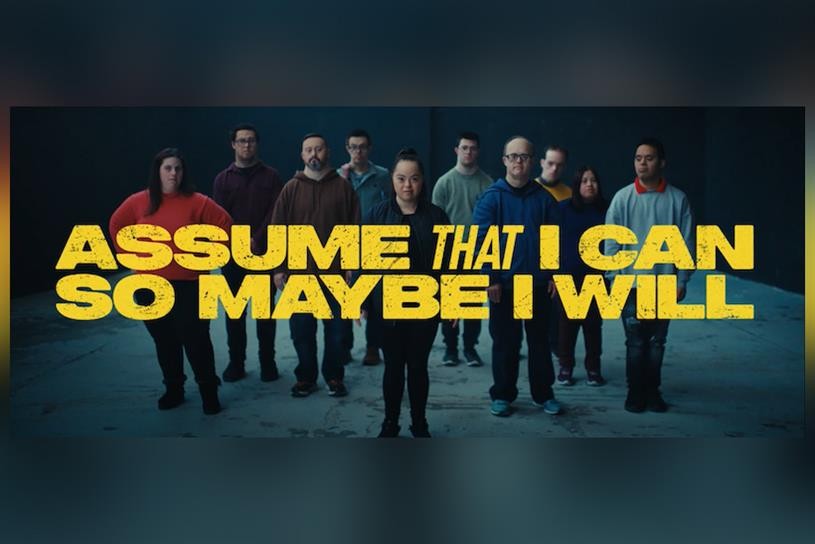
- Campaign Overview: Launched for World Down Syndrome Day 2024 (March 21), this powerful campaign by CoorDown (The National Coordination of Associations of People with Down Syndrome) featured Madison Tevlin, a young woman with Down syndrome, challenging negative stereotypes. Created by SMALL agency, the campaign used the hashtag #AssumeThatICan to encourage positive assumptions about people with Down syndrome across school, workplace, home, and community settings.
- The Results: The campaign achieved phenomenal reach with over 100 million views within just a few days of launch, becoming a worldwide phenomenon. The campaign generated unprecedented attention and engagement across multiple countries, with international Down syndrome organizations partnering to amplify the message.
- The Strategy: CoorDown partnered with international organizations including the National Down Syndrome Society (NDSS) and Canadian Down Syndrome Society (CDSS) to create a global awareness initiative. The campaign featured Madison Tevlin directly addressing viewers and challenging their assumptions, while encouraging people with Down syndrome worldwide to share their own stories of overcoming low expectations.
- Why it worked: The campaign addressed an important social issue with authentic storytelling and genuine impact. It successfully shifted perspectives by having people with Down syndrome speak for themselves rather than being spoken about, creating emotional connections that challenged deeply held stereotypes.
- Key takeaway: Social impact campaigns achieve maximum effectiveness when they authentically represent the communities they serve and provide platforms for those voices to be heard directly, rather than speaking on their behalf.
4. Calvin Klein's Jeremy Allen White Campaign

- Campaign Overview: Calvin Klein’s 2024 collaboration with “The Bear” star Jeremy Allen White featured the actor in steamy workout scenes on a New York rooftop, wearing classic Calvin Klein underwear and apparel. The campaign included video content, photography, and social media activations that capitalized on White’s rising popularity following his Emmy-winning performance.
- The Results: The campaign achieved immediate viral status across social media platforms, generating millions of views and widespread organic sharing. The steamy visuals sparked countless memes, reaction videos, and social media discussions, significantly boosting Calvin Klein’s brand visibility among younger demographics.
- The Strategy: Calvin Klein strategically chose Jeremy Allen White at the peak of his cultural relevance, timing the campaign to coincide with awards season buzz. The campaign maintained Calvin Klein’s signature aesthetic of minimalist, sensual advertising while tapping into White’s authentic appeal and growing fanbase.
- Why it worked: The campaign perfectly aligned White’s rising star power with Calvin Klein’s established brand identity. The content was inherently shareable and generated organic discussion across social platforms, maximizing reach without relying solely on paid promotion.
- Key takeaway: Celebrity partnerships work best when there’s authentic alignment between the celebrity’s current cultural moment and your brand values, creating content that feels natural rather than forced.
5. Domino's Mac & Cheese Launch
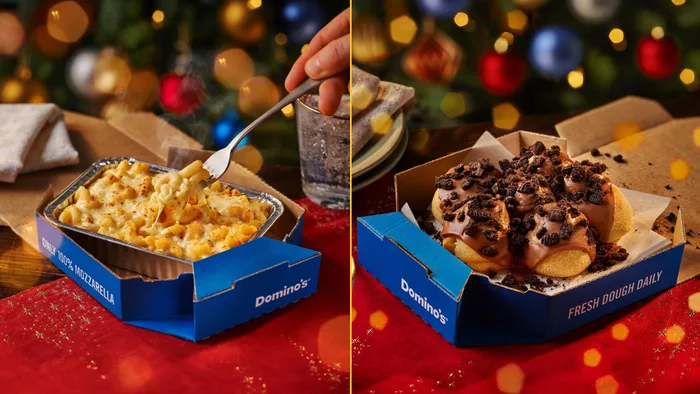
- Campaign Overview: Domino’s 2024 Mac & Cheese product launch campaign used humor and interactive social media content to build excitement around their new comfort food offering. The campaign included teaser posts, behind-the-scenes content, user-generated recipe combinations, and interactive polls across Instagram, TikTok, and Twitter.
- The Results: The campaign successfully generated pre-launch buzz and drove significant trial of the new product, with social media engagement rates exceeding typical Domino’s campaign performance. The launch contributed to increased sales and expanded Domino’s reputation beyond traditional pizza offerings.
- The Strategy: Domino’s leveraged their established social media presence and brand personality to create anticipation through countdown posts, sneak peeks, and user-generated content encouraging customers to share their own mac and cheese creations and combinations with other Domino’s items.
- Why it worked: Domino’s understood their audience’s love for comfort food and fun, irreverent content. They created shareable moments that felt authentic to their brand personality while highlighting the new product in an entertaining rather than purely promotional way.
- Key takeaway: Product launches are more successful when they focus on creating excitement and entertainment rather than just announcing features, especially when they align with your brand’s established personality.
6. Airbnb's "#PollyPocket" Campaign

- Campaign Overview: Airbnb’s creative 2024 partnership with Mattel brought the iconic Polly Pocket to life through a unique accommodation experience. The campaign created a life-sized, bookable Polly Pocket Compact house in Massachusetts, complete with miniature-inspired details and nostalgic design elements that captured the essence of the beloved toy.
- The Results: The campaign generated massive social media buzz and earned millions of impressions across platforms. The unique accommodation sold out within minutes of being available, and the campaign earned significant media coverage from major outlets, driving both brand awareness and bookings for other unique Airbnb properties.
- The Strategy: Airbnb strategically chose a nostalgic brand that resonated with millennials who grew up with Polly Pocket, creating an Instagram-worthy experience that perfectly aligned with their “unique stays” positioning. The campaign included teaser content, behind-the-scenes creation videos, and user-generated content from lucky guests.
- Why it worked: The campaign successfully merged childhood nostalgia with adult travel aspirations, creating a perfect blend of emotional connection and aspirational content. It showcased Airbnb’s ability to offer truly unique experiences that can’t be found elsewhere.
- Key takeaway: Creative partnerships with unexpected brands can generate surprising levels of engagement when they tap into powerful emotional triggers like nostalgia while staying true to your brand’s core value proposition.
Stay Ahead with the Latest Tips & Tricks – Delivered Right to Your Inbox!
Join 30,000+ subscribers for exclusive access to our monthly newsletter! Get insider tech news, gadget reviews, gaming updates, and more delivered straight to your inbox!
7. ASICS "#DeskBreak" Mental Health Campaign

- Campaign Overview: ASICS launched the #DeskBreak campaign in 2024 to address workplace mental health and wellness, encouraging office workers to take active breaks from their desks. The campaign included guided exercise videos, mental health resources, partnership with wellness influencers, and a social media challenge encouraging people to share their desk break activities.
- The Results: The campaign resonated strongly with remote and office workers, generating significant engagement across LinkedIn, Instagram, and TikTok. It positioned ASICS as a brand that cares about holistic wellness, not just athletic performance, leading to increased brand favorability among working professionals.
- The Strategy: ASICS timed the campaign to coincide with Mental Health Awareness Month and increased focus on workplace wellness post-pandemic. They partnered with workplace wellness experts and fitness influencers to create credible, actionable content that addressed real workplace challenges.
- Why it worked: The campaign addressed a genuine problem many people face daily – sedentary work habits affecting mental and physical health. By providing practical solutions rather than just promoting products, ASICS built trust and authority in the wellness space.
- Key takeaway: Addressing real-world problems your audience faces can create deeper connections than purely promotional content, especially when you provide genuine value and solutions.
8. Krispy Kreme's Social Media Engagement Strategy
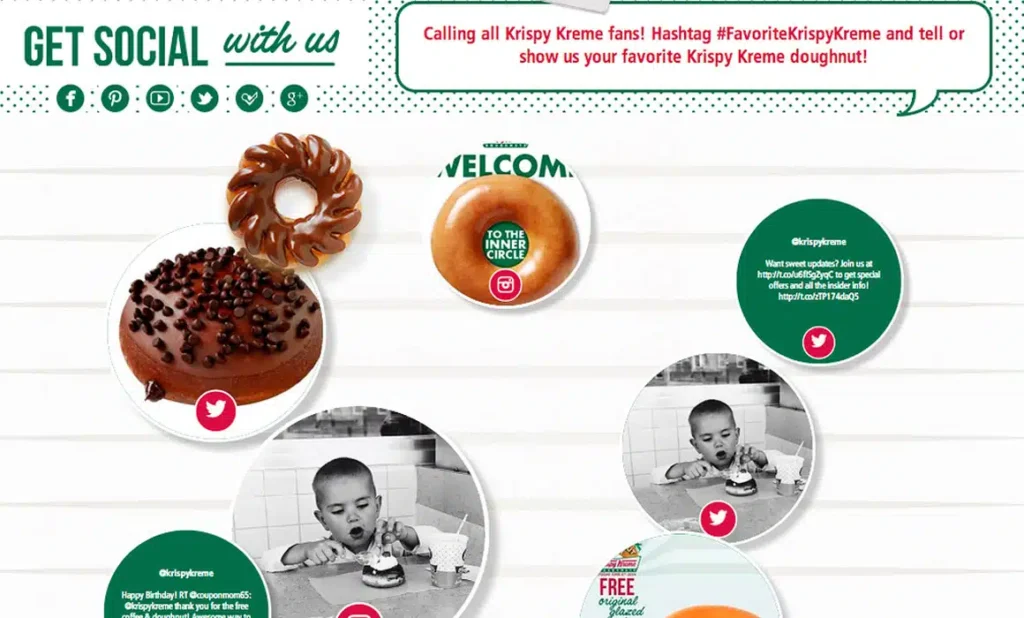
- Campaign Overview: Krispy Kreme’s 2024 social media strategy focused on real-time trend participation and community engagement across TikTok, Instagram, and Twitter. Their approach included jumping on viral trends, creating donut-themed memes, partnering with food influencers, and developing seasonal campaigns tied to holidays and pop culture moments.
- The Results: Krispy Kreme achieved significant increases in social media followers, engagement rates, and importantly, drove measurable foot traffic to stores through location-based promotions and limited-time offers promoted via social media. Their TikTok presence particularly exploded with several viral videos.
- The Strategy: Krispy Kreme’s social media team acted quickly on trending topics, creating relevant content that felt natural rather than forced. They maintained their playful brand voice while staying current with internet culture, particularly on TikTok where they created content that appealed to Gen Z audiences.
- Why it worked: Krispy Kreme successfully balanced brand consistency with cultural relevance, creating content that entertained audiences while driving business results. Their quick response to trends kept them relevant in fast-moving social media conversations.
- Key takeaway: Staying current with social media trends can keep your brand relevant and engaging, but success requires authentic integration of trends with your brand personality rather than forced participation.
9. The Maids' Educational Content Strategy

- Campaign Overview: The Maids developed a comprehensive educational content strategy in 2024 that focused on helpful cleaning tips, home organization advice, and lifestyle content across multiple social media platforms. Their content included how-to videos, cleaning hacks, seasonal home maintenance guides, and user-generated content featuring customer transformations.
- The Results: The strategy led to increased brand trust, higher engagement rates compared to promotional content, and improved customer retention. The educational approach positioned The Maids as cleaning experts rather than just a service provider, leading to increased referrals and customer loyalty.
- The Strategy: The Maids leveraged their deep understanding of their target demographic – busy homeowners who value cleanliness but struggle with time management. They created content that genuinely helped their audience while subtly demonstrating their expertise and reliability.
- Why it worked: By focusing on providing genuine value through education rather than direct sales pitches, The Maids built trust and authority in their industry. This approach created a stronger emotional connection with their audience than traditional advertising.
- Key takeaway: Educational content that genuinely helps your audience can be more effective than traditional promotional content because it builds trust and positions you as an expert in your field.
10. Blank Street x Sabrina Carpenter Collaboration
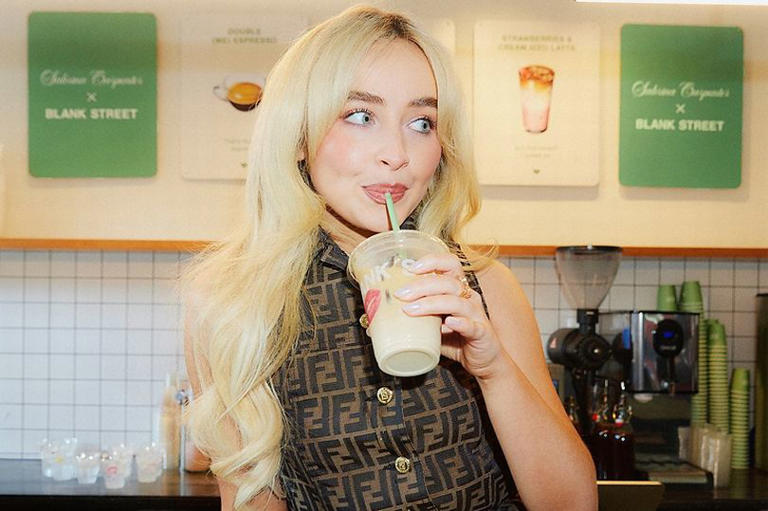
- Campaign Overview: Blank Street Coffee’s 2024 collaboration with pop star Sabrina Carpenter capitalized on her hit song “Espresso” with a perfectly timed partnership. The campaign included limited-edition drinks inspired by the song, social media content featuring Carpenter, co-branded merchandise, and strategic placement in Carpenter’s social media content and music video references.
- The Results: The collaboration generated massive social media buzz, with the campaign hashtag trending across platforms. Blank Street saw significant increases in foot traffic, app downloads, and social media followers. The partnership earned extensive media coverage and positioned Blank Street as a culturally relevant brand among Gen Z consumers.
- The Strategy: Blank Street moved quickly to capitalize on the “Espresso” cultural moment, creating a partnership that felt organic rather than opportunistic. They already had an established millennial and Gen Z following, making the collaboration with Carpenter feel natural and authentic to both audiences.
- Why it worked: The campaign succeeded because it was timely, culturally relevant, and authentic to both brands. Rather than forcing a partnership, it felt like a natural evolution of the “Espresso” cultural phenomenon, making it highly shareable and engaging.
- Key takeaway: The best brand collaborations feel organic and mutually beneficial rather than opportunistic. Success comes from authentic alignment and perfect timing with cultural moments that resonate with your shared audience.
Key Strategies for Successful Social Media Marketing
These successful campaigns share several important strategies that you can apply to your own social media marketing efforts:
- Know your audience deeply – The most successful campaigns demonstrate intimate understanding of their target demographic’s values, interests, and pain points. This knowledge allows brands to create content that truly resonates.
- Tell authentic stories – Modern consumers can spot inauthentic marketing from miles away. The campaigns that work best feel genuine and align with the brand’s established identity and values.
- Encourage participation – Social media is inherently interactive. The best campaigns invite audiences to participate through hashtags, user-generated content, or meaningful conversations.
- Be timely and relevant – Successful social media marketing often taps into current events, trends, or cultural moments. However, this must be done thoughtfully and authentically.
- Focus on value creation – Whether through entertainment, education, or inspiration, successful campaigns provide real value to their audiences beyond just promotional messages.
Measuring Social Media Marketing Success
Understanding whether your social media marketing campaigns are working requires tracking the right metrics. The most important measurements include engagement rates, which show how actively your audience interacts with your content, and reach metrics, which indicate how many people see your posts.
Conversion tracking helps you understand how social media marketing drives actual business results, while brand mention monitoring shows how campaigns affect overall brand awareness and sentiment. Don’t forget to measure the quality of engagement, not just quantity – meaningful comments and shares are often more valuable than simple likes.
Return on investment remains the ultimate measure of success. Track how your social media marketing efforts translate into website traffic, leads, and sales to justify your investment and optimize future campaigns.
Also Read: 50+ Fresh Content Ideas for Tech Startup Social Media Success Want to leverage the latest iOS features for your tech startup’s social media strategy? Discover proven content ideas and strategies that will help you create engaging posts about iOS updates, tech reviews, and mobile innovations to connect with your tech-savvy audience and drive meaningful engagement.
Conclusion
These 10 social media marketing examples prove that creative, authentic campaigns can deliver remarkable results for brands of all sizes. The key is understanding your audience, crafting compelling stories, and choosing strategies that align with your brand values and business objectives.
Whether you’re launching a new product, building brand awareness, or driving sales, these successful campaigns offer valuable lessons for your own social media marketing efforts. Remember that the best campaigns often take risks, address real problems, and create genuine connections with their audiences.
Ready to create your own successful social media marketing campaign? Start by identifying your core message, understanding your audience deeply, and choosing the platforms where your customers are most active. With the right strategy and authentic execution, your brand can join the ranks of these social media marketing success stories.
Frequently Asked Questions
What makes a social media marketing campaign go viral?
Viral campaigns typically combine emotional storytelling, perfect timing, and easily shareable content. They tap into current trends or cultural moments while providing entertainment, inspiration, or valuable information that audiences want to share with their networks.
How much should businesses spend on social media marketing?
Social media marketing budgets vary widely depending on business size and goals. Small businesses might start with $500-$2,000 monthly, while larger companies often invest tens of thousands. The key is starting with clear objectives and scaling based on proven results.
Which social media platforms work best for marketing?
The best platforms depend on your target audience and business goals. LinkedIn excels for B2B marketing, Instagram works well for visual brands targeting younger demographics, while Facebook offers broad reach across age groups. Focus on platforms where your audience is most active.
How often should brands post on social media?
Posting frequency depends on the platform and audience preferences. Generally, posting 3-5 times per week on Facebook, 1-2 times daily on Instagram, and 3-5 times daily on Twitter works well. Quality and consistency matter more than frequency.
What's the biggest mistake in social media marketing?
he biggest mistake is focusing on selling rather than building relationships. Successful social media marketing prioritizes providing value, engaging authentically with audiences, and building community around your brand rather than just pushing products.
About the Author
techeddy
Administrator
Hi, I’m Tushar! 👋 I’m a tech blogger who loves writing about the latest gadgets and technology. I’m also a Software Engineer who enjoys building cool things. Follow my journey as I share easy tips, tech news, and ideas to help you grow and stay updated. Let’s connect and learn together!

